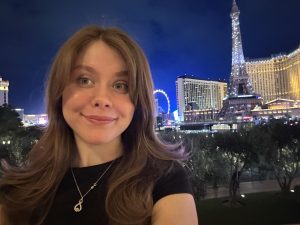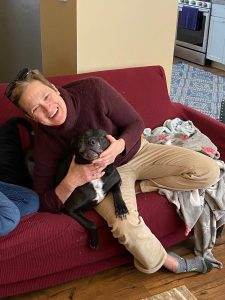IVCC, organizations seek to strengthen diversity
October 15, 2015
The phrase “lack of diversity” is a term that’s commonly used on college campuses. The phrase is used when there isn’t enough of something.
Some colleges tend to lack certain racial groups or interactions between different ethnicities. IVCC lacks both, but despite the low enrollment of non-white students, IVCC is striving to bridge the gap on diversity by promoting programs that foster what’s important to minorities.
One particular program at IVCC whose activities are prominent throughout campus is the Diversity Team coordinated, by Amanda Cook-Fesperman. The Diversity Team began in 1998 and consists of 16 faculty and staff members.
Cook-Fesperman states the team goal “is to create a comprehensive opportunity to experience and interact with different races and cultures where it wouldn’t happen naturally living in a rural area..”
Recently there was a roundtable discussion about the movement Black Lives Matter. Also, in celebration of National Hispanic Heritage month, a little bit of the Latino culture was brought to the students of IVCC. These type of events help bring all types of ethnicities together.
The admissions process is an important factor in diversifying a college campus. IVCC’s admissions department has implemented several strategies to involve minority students. A communications company called Interact was hired to increase overall enrollment.
There may be many factors that could hinder the admission process for minority students. Assistant Director of Admissions Aseret Loveland indicates “language, resources, and finances” cause delays.
A language barrier could prevent materials from reaching the area’s large Latino population. Admissions “would like to develop one in Spanish for the parents of these students,” Loveland said.
Latino enrollment has gone up a percentage each year since 2011, when it was 7 percent, to 8 percent in 2012 and to 10 percent in 2013. Since diversification is an ongoing process, the admissions department “will continue to mentor and provide opportunities to under-represented students.”
Asian enrollment has been 1 percent from 2011-2014. Alaskan/American Indian was 1 percent in 2014.
Admission department goals align with what Cook-Fesperman feels will help minorities on campus: having a “Hispanic organization and a need for a full-time diversity coordinator that’s able to identify with them.”
IVCC did have a Hispanic organization, but, unfortunately, Profesora Anna Marie Pietrolonardo retired last semester. There are interested people hoping to restart the Hispanic organization. There’s definitely a need, since the Latino enrollment continutes to increase.
According to an IVCC demographic report, black enrollment has remained at a steady 2 percent for the years 2011-2013 ,and in 2014 it was at 3 percent. Minorities with these low numbers might feel excluded from their environment.
Adviser Promise Yong stated, “That’s the reason why Black Student Association exists and is having more discussions on diversity topics.”
Yong himself was approached by a former student, Yulandist Brown, with the idea for a Black Student Association in 2012. Brown felt there was need for blacks to get the motivation they needed. Yong indicated, BSA is a multicultural club “that gives support and gets support from other races.”
Faculty welcome diversity ideas, and Loveland indicated: “If students have any ideas or would like to be part of this initiative, we are open to any suggestions.” Diversifying IVCC seems to be an issue that a lot of people care about.
Excerpts from
IVCC’s Black Lives Matter
Roundtable Audience Dialogue
•Students wanted to know what Black Lives Matter meant.
•A student mentioned seeing a story in the news about an incident that involved presidential candidate Bernie Sanders and the Black Lives Matter protesters that interrupted his rally. The student felt the protestors were unprofessional.
•Response: “many people are working all around the country” with movements for Black Lives Matter.
•There was a comment from a student indicating they knew a police officer who felt it was just as dangerous to be a police officer. The facial expressions around the room to this comment were mixed, slight head nods and blank stares.
•Response: An audience member felt, “being a police officer wasn’t more dangerous” The student nodded in response, but his facial expression showed he still believed in his own views.
•The discussion led to a comment being made that the justice system was the problem, not police officers. A young black female student said, “Fear comes from family, I was taught to be scared” of the police. Another student mentioned that one of his black male friends feared he’d be pulled over by police officers while driving.
Reactions outside the Roundtable
•Some Black Lives Matter posters on campus were vandalized. The wording was changed to All Lives Matter. The vandalism made it clear that not everyone was pleased with the discussion.
Referring to the vandalism, Facilitator Amanda Cook-Fesperman said: “I think that shows how desperately we need diversity education on this campus, because it’s one thing to think it, it’s another to be so angered that someone wants to talk about black people and the movement on campus that you actually vandalize signs.”
Another reaction to the vandalism came from Promise Yong, “I feel embarrassed something like this happened on campus, that some people still have no respect for opinions different from their own. The idea of Black Lives Matter came because of a problem — it doesn’t mean all lives don’t matter.”
Despite some negative reaction to the event many people were pleased with the discussion.
Black Lives Matter Movement History
•The movement started in 2012 after the murder of a black teen named Trayvon Martin. The founders of Black Lives Matter explained the reason behind this movement was “to broaden the conversation around state violence to include all of the ways in which black people are left powerless at the hands of the state.”
Crowd Turnout
•The participants filled two meeting rooms, but Amanda Cook-Fesperman wasn’t surprised. “I expected the turnout I got. I was pleased. That was my level of expectation because we got the same last year.” The diversity team also discussed the Ferguson incidents last year.
•The crowd at this year’s roundtable took advantage of the extra credit incentives the professors offered to promote the event. Faculty, staff and IVCC President Jerry Corcoran also attended. Cook-Fesperman facilitated the event.


